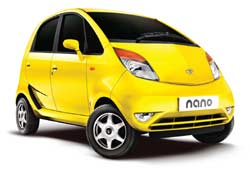Maruti Suzuki's entry into the luxury sedan segment, aptly named ‘Kizashi' (‘omen' in English), may turn out to be a good sign indicative of the small car major's future in the premium segment.
Going by the first response from car buyers, the sports sedan seems to have generated good demand in only a month of launch. The Kizashi has already recorded around 400 bookings and now carries a waiting period of up to three months. Deliveries are to start on March 10.
“We've seen a good surge in demand for the Kizashi and are very happy. Though deliveries will only start by the middle of this month, we have already received about 400 pre-bookings,” said the Maruti Suzuki Chairman, Mr R.C. Bhargava.
The Kizashi's early popularity contrasts with the Suzuki Grand Vitara, a petrol-powered sports utility vehicle (SUV) that hardly created a stir in the diesel-dominated UV market on single-digit monthly sales. Interestingly, both the sedan and the SUV share the same 2.4 litre petrol powerplant.
NO PRODUCTION CONSTRAINT
The New Delhi-based car market leader is now set to order the second shipment of around 350 units for the Kizashi from parent Suzuki Motor Corporation, Japan. The sedan is manufactured in Sagara, Japan, and imported into India as a completely built unit.
“There's no production constraint, so we can order as many units form Japan as there is demand for the Kizashi. Our first lot of 350 units arrived in January-February and the second lot is likely to be ordered this month,” said Mr Shashank Srivastava, Chief General Manager (Marketing), Maruti Suzuki.
He added, “Our initial order book could grow even further as we make cars available for display at the showrooms. There has been a lot of demand for test drives, but we have very few units available, which should change soon.”
Launched on February 2 with a price of Rs 16.5 lakh (manual) and Rs 17.5 lakh (automatic), the Kizashi is pitted against the petrol sedans in the A4 (Honda Civic, Toyota Corolla) and A5 (Honda Accord, Toyota Camry) segments in terms of both features and price. While the Honda Civic sells around 300 units a month, the Accord does sales of close to 200 units.
Though the A4 and A5 segments only have a 3.5 per cent share of the total passenger car market, combined sales in the two segments have grown about 23 per cent this fiscal with the A5 segment itself registering around 48 per cent higher sales.
According to industry experts, with luxury car sales growing on buyers getting richer, Maruti's huge customer base and brand goodwill is likely to push its growth in the premium segment as well. An added benefit is a huge servicing network, which will push sales in smaller towns where many have the resources but, hitherto, no access to luxury products





 "The average increase is about Rs9,000 (ex-showrooms), with prices varying from city to city and model to model," the company said in a release.
"The average increase is about Rs9,000 (ex-showrooms), with prices varying from city to city and model to model," the company said in a release.